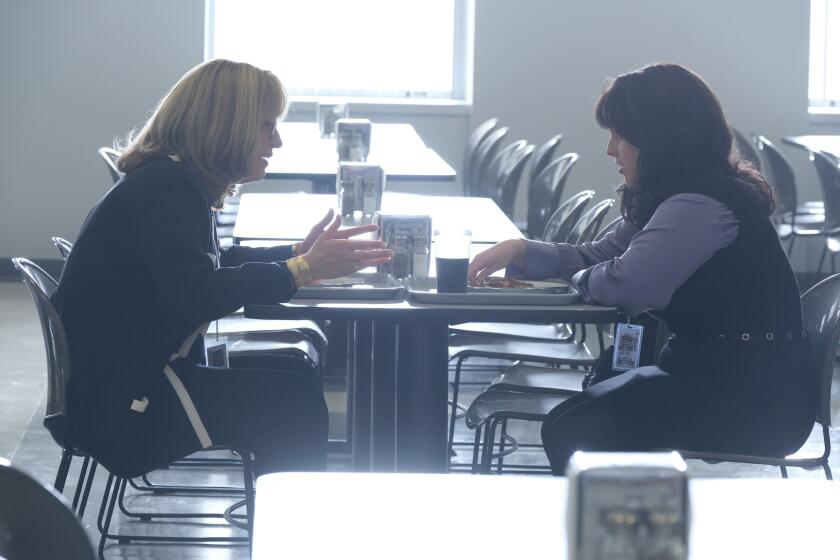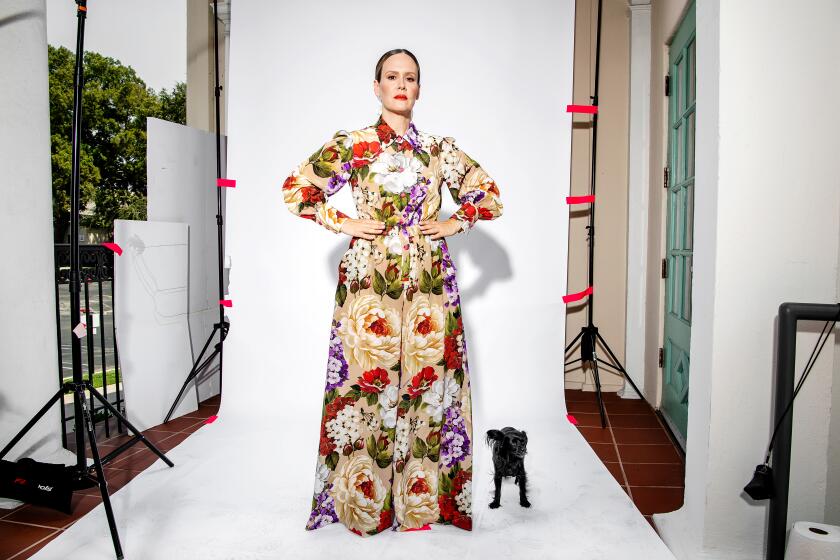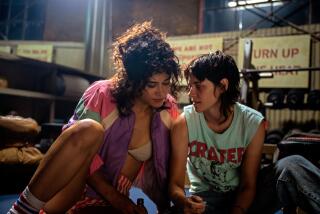The women of ‘Impeachment’ explained: Marcia Lewis and Monica’s childhood
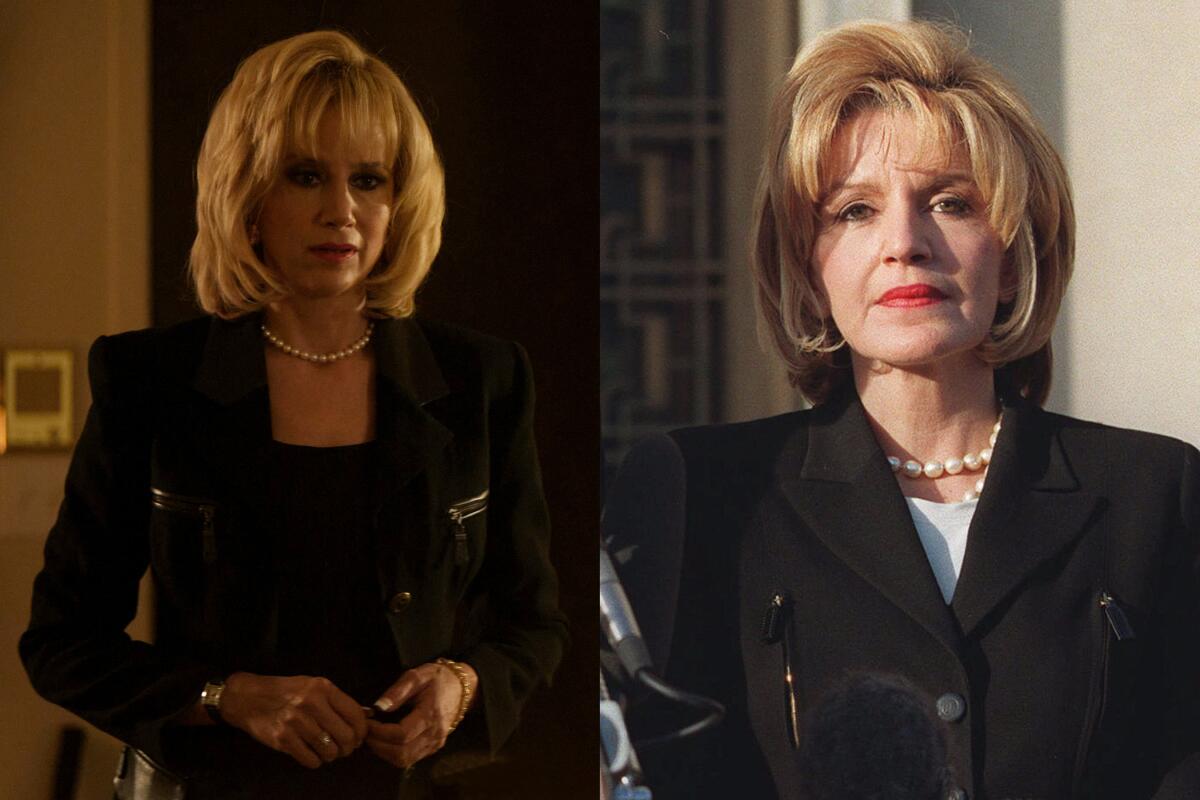
The following contains spoilers from Episode 6 of “Impeachment: American Crime Story.” Read our full coverage of the series here.
Monica Lewinsky’s life changed forever at a mall food court.
The latest episode of “Impeachment: American Crime Story” revisits the events of Jan. 16, 1998, the day Lewinsky (Beanie Feldstien) was lured to the Pentagon City Mall by Linda Tripp (Sarah Paulson), apprehended by FBI agents, taken to a suite at the Ritz-Carlton and subjected to 11 or so hours of interrogation and intimidation by prosecutors in the office of independent counsel Kenneth Starr.
“Man Handled” also more deeply explores Lewinsky’s family life, including her close-knit relationship with her mother, Marcia Lewis (Mira Sorvino), who rushes to her side and helps her stand up to pressure from Starr’s team.
The complete guide to home viewing
Get Screen Gab for everything about the TV shows and streaming movies everyone’s talking about.
You may occasionally receive promotional content from the Los Angeles Times.
Yes, this all happened at a mall
It’s fitting that a turning point in this very ‘90s tale takes place in the most ‘90s setting imaginable: a mall in suburban Virginia. And it happened very much as portrayed in “Man Handled,” right down to the black leggings and blue fleece worn by Beanie Feldstein.
In “Monica’s Story,” biographer Andrew Morton recounts the mundane details of the day Lewinsky went from private person to public figure. She began the day with an aerobics class at the gym, stopped for a coffee at Starbucks, then reluctantly headed to Pentagon City — across the Potomac River in Arlington — to meet with Tripp.
She was taken to Room 1012 at the Ritz-Carlton, where she insisted on calling her mother in New York. While Lewinsky waited for Lewis to make the journey via train, Lewinsky roamed the mall for several hours in a bid to kill time.
Accompanied by an FBI agent and Michael Emmick, one of Starr’s deputies, she shopped at Crate & Barrel, tried to call Betty Currie, Bill Clinton’s personal secretary, from a department store restroom and ate dinner with her handlers at a cheesy mall restaurant — though in reality it was not a TGIFriday’s-esque establishment but a pizza place known as Mozzarella’s American Grill.
At press time it was not known whether Lewinsky did, in fact, order the bourbon teriyaki salmon, though one hopes not.
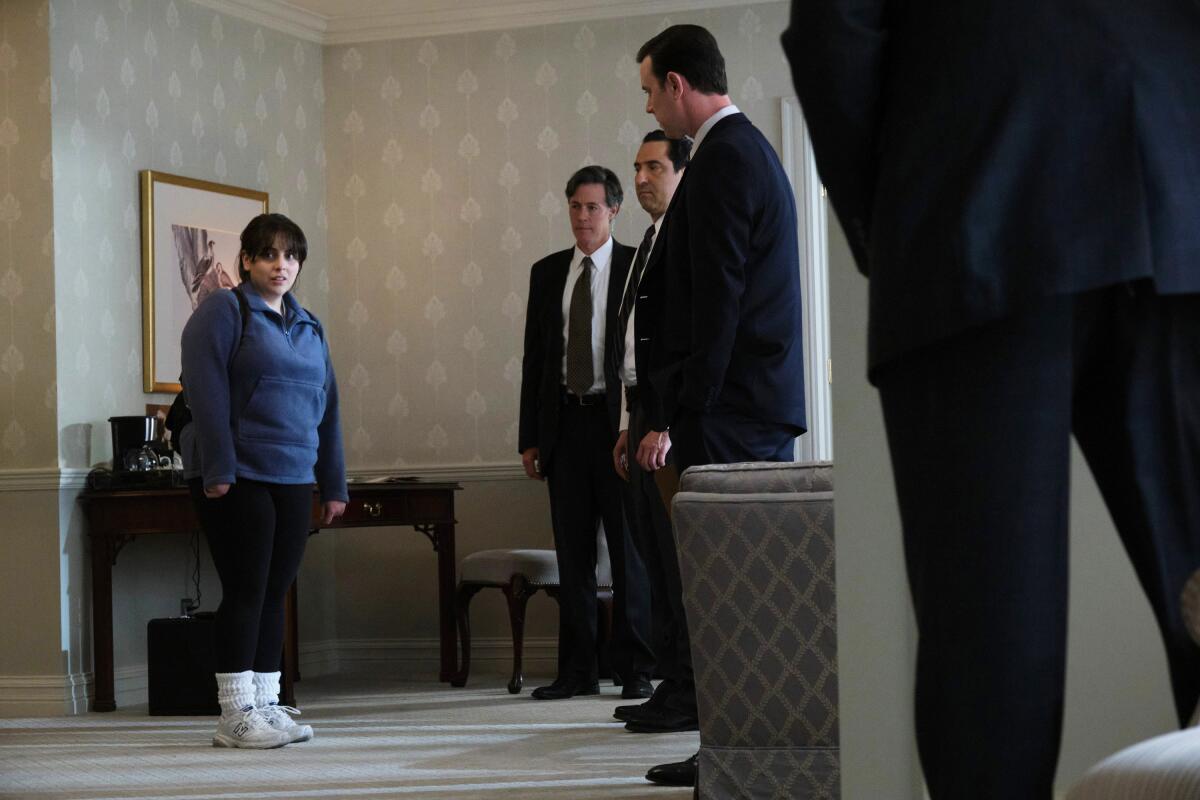
Lewinsky grew up an L.A. girl — Beverly Hills, to be exact — but didn’t always feel like she belonged
“Impeachment” has fun playing up the odd couple friendship between Jewish, Beverly Hills-bred Lewinsky, and Tripp, a Christmas-obsessed middle-aged suburban mom.
Lewinsky’s father, Bernard, was a successful radiation oncologist, while her mother was a homemaker and later a freelance writer.
According to a profile in the Los Angeles Times published in 1998, the family, which included Monica’s younger brother, lived at 604 N. Hillcrest Road in Beverly Hills — within the 90210 ZIP Code, as everyone in the late ‘90s was eager to point out — and attended Sinai Temple in Westwood, a Conservative Jewish congregation “popular with business and entertainment executives.”
Lewinsky grew up in an atmosphere of privilege. Her father made a reported $37,000 a month in 1988, their family home was valued at $1.6 million and the Lewinskys enjoyed lavish vacations and shopping.
But Lewinsky didn’t always feel at home among the children of the rich and famous. She attended the exclusive John Thomas Dye School in Bel-Air, and told Morton she was the only classmate not invited to an extravagant birthday bash for Tori Spelling (attractions at the party were said to include Michael Jackson and “the world’s tiniest pony,” according to “Monica’s Story”).
She later transferred to Hawthorne Elementary, a public school, where she was part of a clique of girls “who wore matching pink sweatshirts and called themselves the One and Onlys, inspired by “Grease.” She was voted vice president of her eighth-grade class.
Lewinsky struggled with body image and started dieting at a young age. A classmate cruelly nicknamed her “Big Mac.” At 16, her parents sent her to an eating disorder clinic.
This season dramatizes the road to the 1998 impeachment of President Bill Clinton. Here’s our guide to the women at the center of the story.
Her parents’ divorce was traumatic — and so was high school
Her parents, who had a turbulent marriage, separated in September 1987, just as Monica was starting ninth grade at Beverly Hills High School. The acrimonious split, during which the couple leveled allegations of infidelity and emotional cruelty (his) and reckless spending (hers), was finalized the next year. Lewinsky had always been close to her mother, who told her the divorce was a result of her father’s infidelity.
“I had this secret hostility towards my dad,” she later told Morton. “At the time, I was very supportive of my mother.”
Lewinsky felt intense pressure to fit in at Beverly Hills High School, a place where, as she told Morton, “being overweight was not acceptable.” She found solace in Beverly Hills High’s renowned drama program but transferred to Bel Air Prep — which was later known as Pacific Hills School and was described by a friend as “a school of last resort” — in her junior year.
Whatever the school’s merits, she thrived there, winning a talent show by singing “On My Own” from “Les Miserables,” and graduated in 1991.
After high school, Lewinsky enrolled at Santa Monica College, a community college — her father reportedly declined to pay for tuition at Boston University — and worked at a tie store called the Knot Shop. She later transferred to Lewis & Clark College in Portland, Ore., and graduated with a degree in psychology.
Monica was a fan of soap operas
Years before she became the center of a whirling political scandal, Lewinsky’s name appeared in the pages of the Los Angeles Times in a story about a meet-and-greet event for fans of “Days of Our Lives”:
Monica Lewinsky, 18, of West Los Angeles said that she doesn’t really identify with obsessed soap fans, but believes watching daytime dramas can be therapeutic.
“People who are always saying daytime TV is something that is not to be credited are wrong,” she said. “‘Days of Our Lives’ adds spice to a life, rather than being the essence of a life.”
Later in the piece, she added, “I really think there is magic. … Daytime really wants to give something to the audience, and I think that in nighttime they want to take something.”
According to the 1998 profile in the Times, Lewinsky was a soap fan from a young age. A neighbor said she was allowed to watch “Dynasty” at 7 or 8. Years later, she reportedly “cried her eyes out” watching “Titanic.”
Annaleigh Ashford delivers ‘Impeachment’s’ most empathetic performance as the much-maligned Clinton accuser: ‘It must have been unbearable,’ she says.
She was in a relationship with a married man before Clinton
While Lewinsky was attending Santa Monica College, she remained active in the drama department at Beverly Hills High School. During this time, she became involved with Andy Bleiler, a married older man who worked as a technician in the school’s theater program. Their tortuous on-off affair lasted for several years.
As she told Barbara Walters in 1999, Lewinsky was drawn to unavailable men because “I didn’t have enough feelings of self-worth. I didn’t feel that I was worthy of being No. 1 to a man.”
Marcia Lewis wrote a gossipy book about the Three Tenors
When news of Lewinsky’s relationship with the president broke in 1998 and thrust her family into the spotlight, much was made of the fact that Marcia Lewis had written a mildly salacious book about the Three Tenors.
After she got divorced, Lewis worked sporadically as a freelance writer. She and her sister, Debra Finerman, wrote a few columns for the Hollywood Reporter.
Then in 1996, she published “The Private Lives of the Three Tenors: Behind the Scenes with Placido Domingo, Luciano Pavarotti and Jose Carreras.” She was reportedly paid in the high five-figures for it.
Lewis reportedly hinted at an affair with Domingo, and her book included a chapter in which she imagined the singer’s “lovemaking would be passionate and romantic, with murmurs of adoration and love, and an expert knowledge of how to pleasure a woman,” according to a Washington Post profile.
The book sold a modest 20,000 copies but brought Lewis something more rewarding than royalty checks: While promoting it, she met Peter Straus, a pioneering radio host and media executive who’d once been married to a member of the Sulzberger family. They became engaged shortly before the scandal broke and later married.
After reclaiming Marcia Clark, the actor expected her latest role to change minds about ‘the most hated woman in America.’ She may have miscalculated.
Lewinsky went to D.C. in the hope of putting her romantic troubles behind her. And yes, she really did live at the Watergate
Lewis used family connections to help Lewinsky secure a White House internship in the summer of 1995. By that time, Lewis had relocated to Washington, taking an apartment at the Watergate to be closer to her sister, Debra, whose husband had joined a cardiology practice in the area and who had a pied-a-terre in the building.
At the time Lewinsky was thinking of pursuing a PhD in forensic psychology and was not especially interested in politics but wanted to be close to her mother. She was also excited about turning over a new leaf in her romantic life and saw moving to Washington as her way out.
“Leaving Portland seemed to be the only way to put [Bleiler] behind me,” she told Morton.
In her application, she wrote an essay about the need for psychologists in government. She was accepted and in July 1995 started her White House internship, writing correspondence for Chief of Staff Leon Panetta.
More to Read
The complete guide to home viewing
Get Screen Gab for everything about the TV shows and streaming movies everyone’s talking about.
You may occasionally receive promotional content from the Los Angeles Times.
